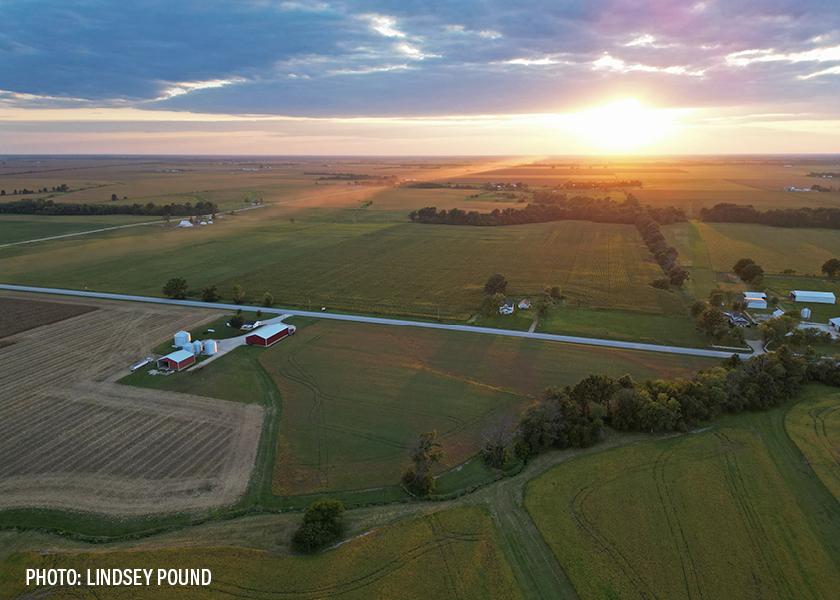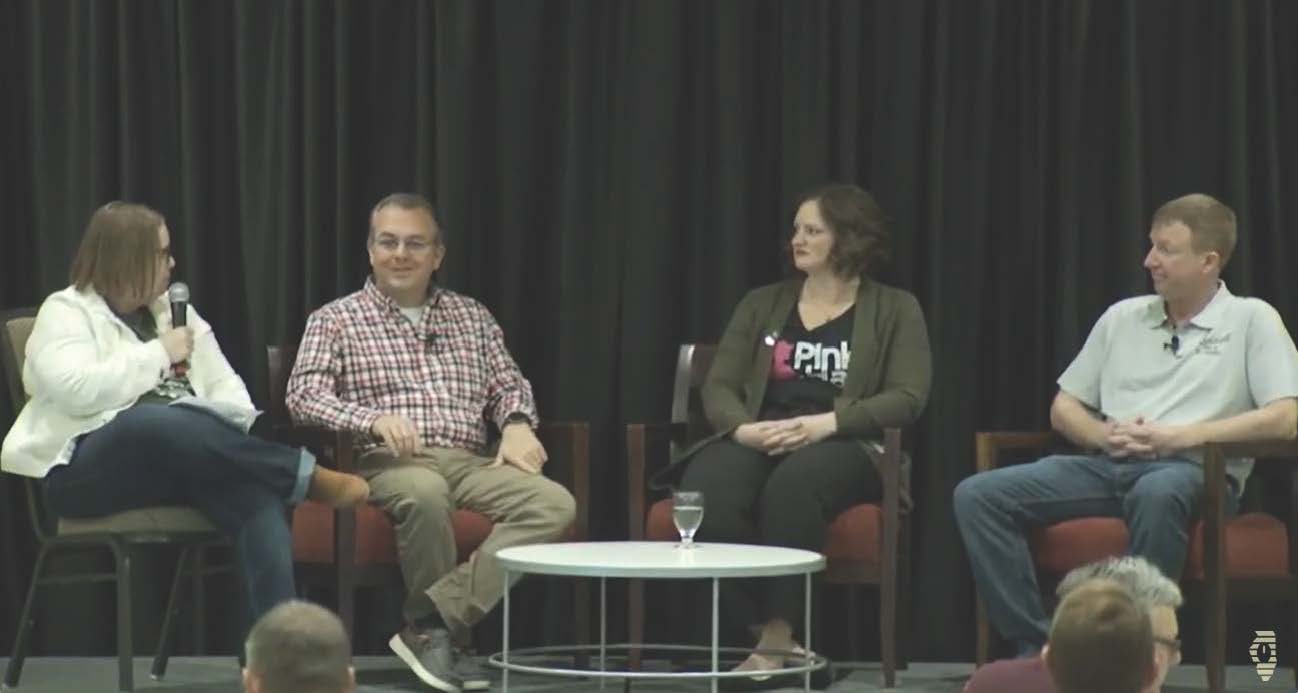Four Things To Tell Farmers Just Starting Out

At the beginning of their farming career, everyone is either the young farmer or the new farmer starting out and hoping to make it a go in production agriculture.
With that perspective in their rearview mirrors, a panel of three farmers addressed the idea of starting anew during a panel discussion at the 2024 Illinois Soybean Summit.
Stephanie Porter, panel moderator and outreach agronomist for the Illinois Soybean Association, asked the three participants, “What kind of advice would you give to a farmer starting out? What would you tell them? What have you learned?”
Here are four things the panel said they would share:
1. Capitalize On Both Youth And Experience.
Adam Braun said when he returned to the family farm in south-central Illinois 12 years ago after working full time as an electrical engineer, he had a list of new practices he wanted to try.
“It was a lot of ideas, and I wouldn’t say they were all great ideas,” Braun said with a chuckle. “I give my dad a

lot of credit, because he let me do a lot of things.”
Not every idea worked out, but Braun said one of the things he and his dad were able to capitalize on was the operation’s heritage of adopting conservation practices, with an emphasis on caring for their soil.
A key learning was finding that if he could adopt something successfully on a small scale, like no-till, he could often expand upon it and continue his success. Sometimes the process involved taking two steps forward and one step back, like their use of cover crops, a practice that has evolved and became successful over time.
Few of his successes would have been possible, though, Braun reiterated, if it hadn’t been for his dad’s willingness to let him try.
“My advice to the dads in the room is give your kids a little bit of leeway,” Braun said. “They probably have some ideas you’ve never thought of that can fit the bill if you let them develop it and help them along the way, too.”
2. Communicate Openly And With Transparency.
Kate Huffman, a sixth-generation farmer in northwest Illinois, near Galva, addressed the interaction between family generations – the importance of clear, frequent communication – and the value of having an inner circle of advisers.
“To the older farmers or to the next generation, be transparent,” she advised, recalling a family situation some generations ago when that didn’t occur.
“It was heartbreaking, and every family probably has their own story. But from that, we didn’t wallow in it, we didn’t play the victim,” she recalled. “We turned around, and we have been completely transparent from the fifth generation to the sixth generation, and everybody is at the table.”
The “everybody” she references includes key farm advisers, such as the family’s accountant, attorney and an estate planner.
“That’s made the transition to me (coming back to the farm) a lot easier than I had thought it would be,” added Huffman, who grows corn and soybeans with her dad. She also still works full-time off the farm as a financial officer at Compeer Financial in Geneseo, Ill.
3. Develop Your Plan, And Commit To It. Tweaks Can Be Made.
Everyone has expectations for how things will play out on the farm in real time. Putting your plan down on paper, developing a framework for accomplishing goals and figuring out how to handle setbacks are all part of the process.
“It’s that old saying, you’ve got to walk before you can run,” said Jay Riddell, who references his family’s decision to make the agronomic move to high-management strip-till practices.
“We just didn’t allow it to get us frustrated,” he said. “We kept at it and kept looking forward to what we’d do the next year, and we’ve been really blessed in the process,” added Riddell, who farms 2,500 acres in north-central Illinois, near Sparland.
4. Be Proactive In Addressing Your Finances And Marketing.
Dollars are on everyone’s mind, especially given the outlook for low commodity prices this year.
“It's tough. It's not pretty, that's for sure. But you can’t just sit there and watch (prices) go down,” said Huffman. “I think the biggest thing is knowing your breakeven and trying to minimize the bleed if you're under that breakeven.”
Huffman said she uses crop insurance, forward contracts a percentage of her crops and “relies heavily” on her grain merchandiser for recommendations.
Riddell said he has a low risk tolerance. "We don't swing to try to hit homeruns. We try to be a little bit safer with what we do that add value here and there."
Riddell added that one of his family’s strategies is to do profit-sharing contracts with area farmers who retire and want him to work their ground.
“We’ve had good growth on our farm, but we do not go out and pay cash rents,” he said.
The profit-sharing contracts set up a win-win scenario for Riddell and his family and for the retiring farmers as well.
“They want their ground to do well and they want me to do well, and I want to do good for their ground,” Riddell said. “This (profit-sharing contracts) puts us all on the same team.”
At the Illinois Soybean Summit, the farmer panel addressed a variety of topics during the one-hour session. You can hear their complete discussion here.
Learn more about farm numbers and farmer trends at these AgWeb stories:
Top 5 Takeaways From the Latest Census of Agriculture
How Many Farms Are in the U.S.?
2024 Top Producer of the Year Finalist PJ Haynie: Advocacy And Tenacity
2024 Top Producer Of The Year Christine Hamilton: Driven For Excellence







